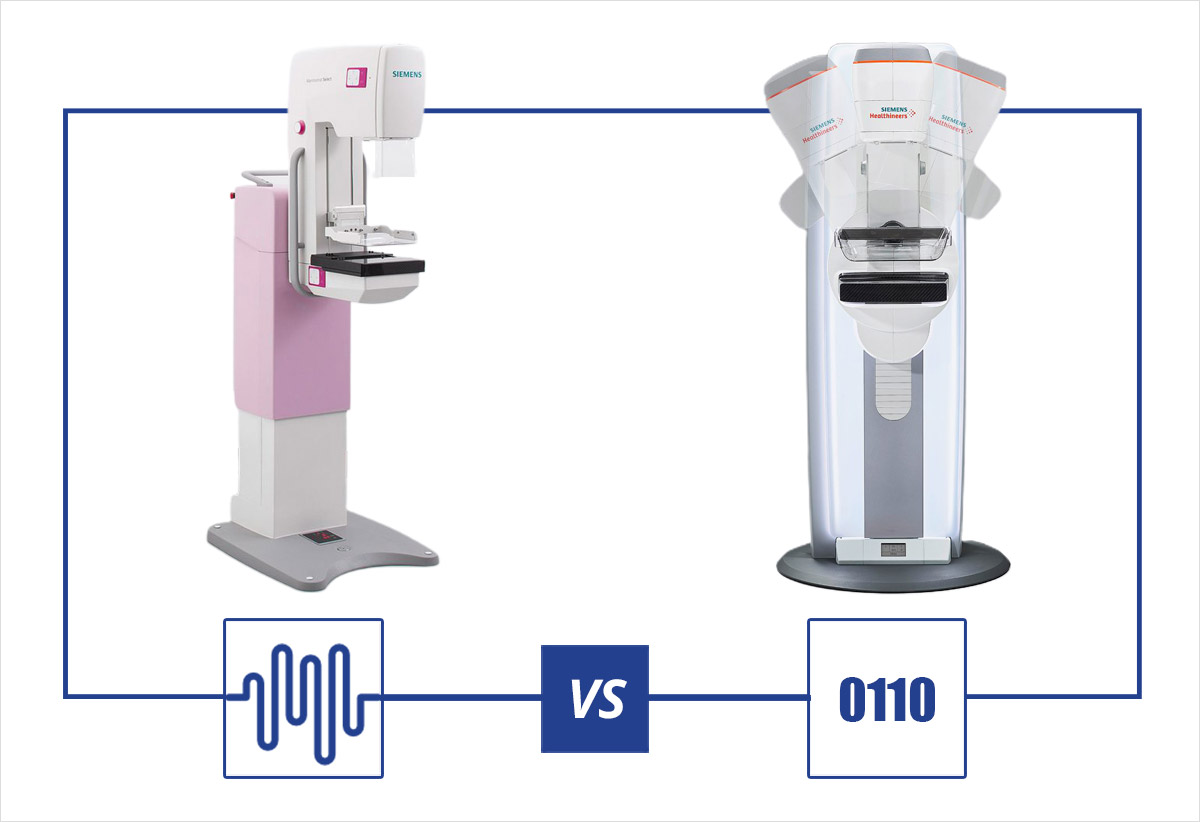Difference between Analog and Digital Mammography Equipment

Before introducing the features of the analog and digital mammography machines, let’s take a quick review of the mammography procedure. It is important to know that mammography is a type of breast imaging procedure that utilizes low dose x-rays for cancer detection. These medical devices continue to be the leading thing when it comes to the early detection and prevention of the breast cancer. You must remember that mammography is a great process because it could detect the changes in breast tissues up to two years before it comes palpably.
As the technology marks rapid progress, the mammography devices also have changed in a great direction. This means that the analog mammography equipment was the general and standard option for many years before. Decades ago, the FDA approved the application of the first full-field digital mammography device and with this step started the revolution of the imaging technology. This step also improved drastically the quality of the images. Before several years, the 3D mammography unit was available on the market. The new mammography unit comes with more advanced features and provides the best image quality.
Difference between analog and digital mammography devices
Keep in mind that analog mammography unit utilizes a low dose of radiation that provides high-quality x-rays. This machine can also detect changes of 1-2 mm. Another thing to consider is that this type of mammography machine captures the x-rays beams on specific film cassettes, and the result is a film which shows the breast from many different angles.
When it comes to the digital mammography, the device captures the x-ray beams on a digital detector. Then it converts the x-rays beams into electronic signals which are later transferred to a computer. Finally, the computerized photos are becoming available for a review on a special monitor with high-resolution. After this, the digital photos could be analyzed by radiologists utilizing the tools and other options offered by the imaging program.
The advantages of digital and analog mammography devices
The positive features of digital mammography units
- It provides more efficient effect because the images are available on the computer
- The images are shown immediately on the monitor and if they are not good the clinician can repeat the imaging procedure
- The digital detector gives crisp photos even in the situation of larger breasts
- The clinician can easily transfer the images for a consultative opinion
- The clinician can perform an easy analysis of the images
- Lower radiation doses over 30-40% over the analog devices
- Early cancer detection, even in the patients with denser breasts
- It can work well with CAD (computer-aided detection) devices
The positive features of analog mammography units
- They are much more affordable for small hospitals and medical centers
- The images from analog machines could be transformed into digital with a CR and later saved as DICOM
- Repairs to these devices are less costly because they don’t have a digital detector which is a fragile and expensive part
- Because these mammography devices are easy to maintain it is also easier to find a great company for providing a service contract
The disadvantages of digital and analog mammography devices
The negative features of digital mammography units
- More expensive than conventional analog mammography machines
- The digital detector is fragile and if it breaks, the repair would cost more
- These devices are more sensitive to the ambiance of changing temperatures
- They provide a lower spatial resolution
- There are manufacturers who don’t want to provide contracts over the service
The negative features of analog mammography units
- Less detailed than digital counterparts
- These devices use a film which needs to be inserted in a CD reader to transform the image into a digital This way, it takes a longer time to receive the needed image
- There are two systems that are working together so, if one fails, the whole procedure needs to be “down”
- It is difficult to archive the images unless you have a CR
- The sale of these units is decreasing and because of this it may be difficult to find some parts for repairing
How to choose which one is most suitable for your medical practice
It is more than obvious that the managers of the hospitals should take a close look at all advantages and disadvantages of both, analog and digital mammography equipment. This way, they will find out which machine suits them and their solution. They also need more advice from a proper manufacturer who will determine which device is the best option for the Clinique. He will also give more information about the financial benefit and the service benefit when purchasing new or refurbished mammography equipment.

 SUBSCRIBE TO OUR BLOG
SUBSCRIBE TO OUR BLOG
